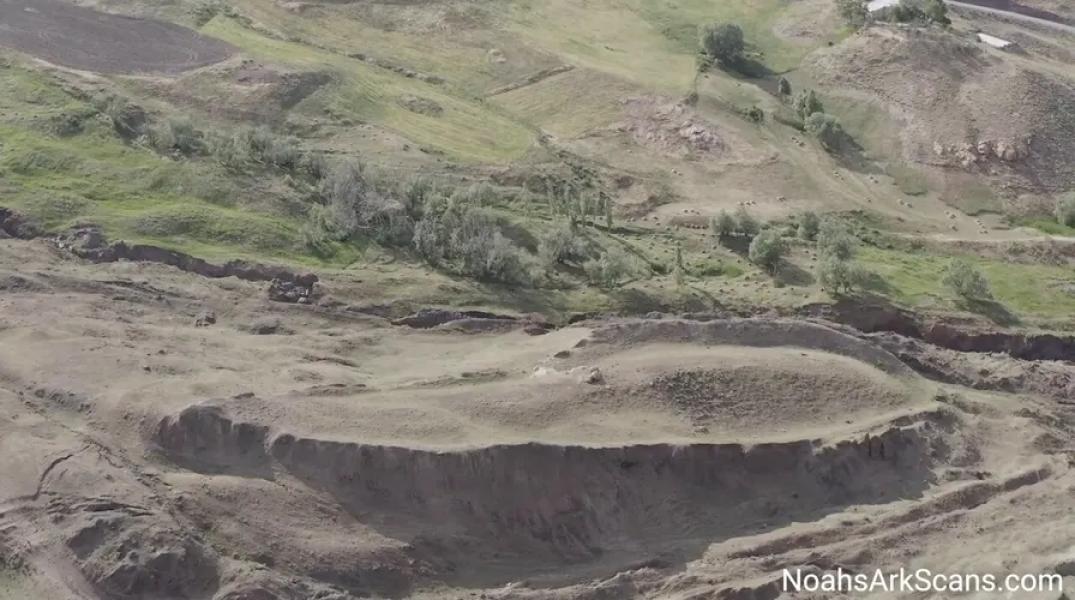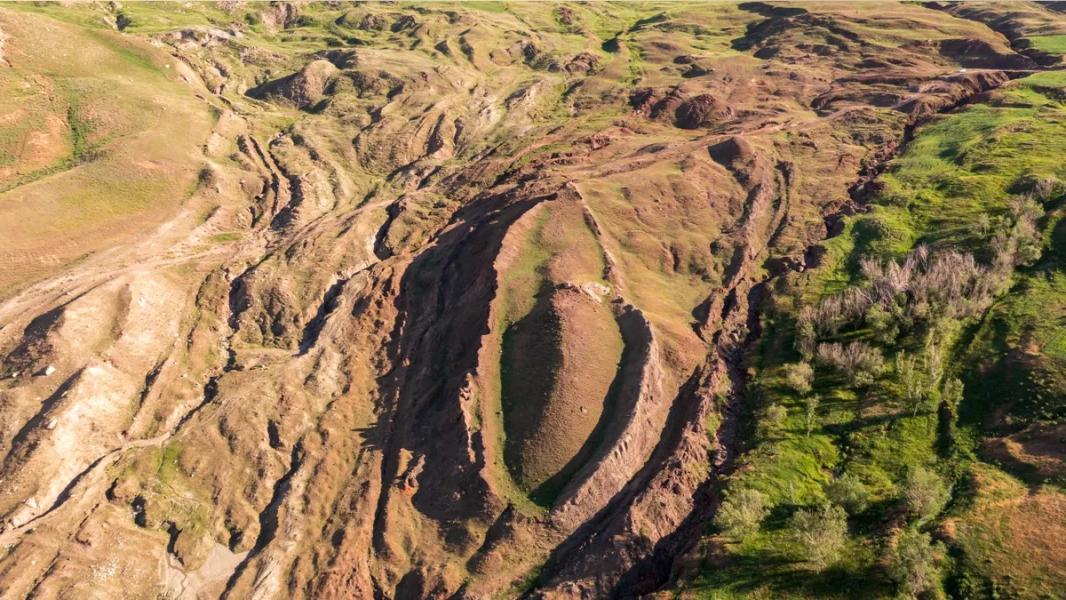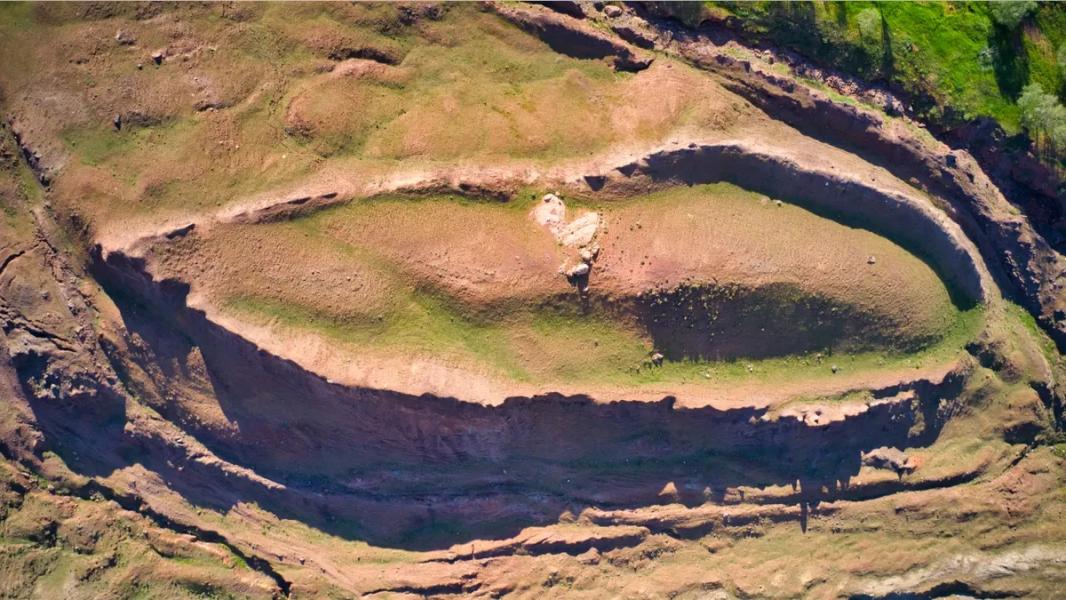
Video Researchers Suggest Noah's Ark Site May Be in Eastern Turkey
International researchers from the Noah's Ark Project have analyzed soil samples from the Durupinar site in eastern Turkey, which confirm that ancient wood was once present at the boat-shaped site. (Source: NoahsArkScans.com)
A team of international researchers says they are closer to identifying possible remains of Noah's Ark, with new test results raising hopes.
The object of their research is the settlement of Durupinar in eastern Turkey, which was first discovered in the 1950s.
For years, the boat-shaped site was thought to be the site of Noah's Ark, but there was no definitive proof. Now, an organization called Noah's Ark Scans believes that recent soil samples indicate the presence of “ancient wood” at the site.
Researchers collected soil samples from the site last September and analyzed them this winter. The results “show significantly higher levels of organic matter and potassium compared to surrounding areas,” according to a recent statement from the organization.
“[The results] strongly suggest the presence of a unique, potentially human-made structure beneath the surface, distinct from the surrounding debris flow,” says Noah's Ark Scans.

A team of researchers has found evidence that supports the idea of where Noah's Ark might have been. (Getty Images; NoahsArkScans.com)
“These results indicate the presence of decaying wood or other organic materials, consistent with a large ancient structure remaining in the village,” the statement said.
Lead archaeologist Andrew Jones told Fox News Digital that researchers are recording 2.72 times more carbon inside the “boat-shaped object” compared to its immediate surroundings.
“The composition of the soil is noticeably different from a natural mudflow, indicating that something unusual is going on at this site.”
“Rotting ancient wood in a boat-shaped area likely creates a specialized soil microenvironment by lowering pH… increasing organic matter [and] increasing potassium levels,” he explained.
“Wood decomposition directly affects the organic matter of the soil,” he added.
“As the wood decomposes, it turns into humus, a stable form of organic matter rich in carbon. This increases the level of organic matter in the soil where the wood is found.”
In a statement, soil scientist William Crabtree said the results indicated “something unusual.”
“The soil composition is significantly different from that of a natural mudflow, indicating that something unusual is going on at this site,” Crabtree said.

Researchers say the boat-shaped object matches the dimensions described in the Bible. (NoahsArkScans.com)
Not all of the evidence for the hypothesis is scientific, however. The 515-foot formation “exactly matches the biblical dimensions of Noah's Ark,” according to scans of Noah's Ark.
“Unlike the surrounding volcanic mudflow, the unique soil and subsurface anomalies of this site make it stand out,” the project emphasizes.
The study builds on previous 3D GPR scans conducted in 2019 that “revealed subsurface features” and detected anomalies.
“The scans revealed a 234-foot central corridor and corner structures — potentially rooms or corridors — up to 20 feet deep,” the project said in a statement. “These rectangular formations, atypical of natural geological processes, suggest intentional design.”

Scientists conducting research at the Durupinar site in Turkey claim to have found compelling evidence for the Noahide hypothesis
Sourse: www.foxnews.com





